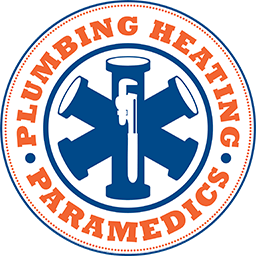
The HVAC installation process is a crucial aspect of ensuring your home remains comfortable throughout the year. Whether you’re upgrading an old system or installing a new unit, understanding the steps involved can help set clear expectations and make the entire process smoother. Knowing what to expect at each stage allows you to prepare adequately and ensure that your new HVAC system operates efficiently.
Initial Assessment and Consultation
The first step in the HVAC installation process is an initial assessment and consultation. During this phase, our professionals conduct a thorough evaluation of your home to understand its specific heating and cooling needs. This assessment includes examining the size of your home, existing ductwork, insulation levels, and any current HVAC equipment in use.
Our technicians will discuss your comfort preferences and any specific requirements you might have. This could involve understanding particular zones in your home that need more temperature control or identifying areas where the current system is inefficient. Gathering this detailed information helps in making accurate recommendations for the type of HVAC system that will best suit your home.
Additionally, this consultation provides an opportunity to address any concerns or questions you might have about the HVAC installation process. Our professionals will explain the different HVAC services we offer and discuss potential options, ensuring you are well-informed before making a decision. This step is crucial, as it sets the foundation for a successful and tailored HVAC install that matches your home’s unique needs.
Selecting the Right HVAC System
Once the initial assessment is complete, the next step involves selecting the right HVAC system. Choosing the appropriate system is vital for achieving optimal comfort and efficiency in your home. Our professionals will present you with options based on the data gathered during the assessment, recommending systems that are compatible with your specific requirements.
Several factors influence this decision. The size and layout of your home play a significant role, as does your budget and any preferences for energy efficiency. Our technicians will explain the benefits of different types of systems, such as central air conditioning, ductless mini-splits, and heat pumps. Understanding these options helps you make an informed choice that aligns with your comfort and energy goals.
Efficiency ratings and features are also considered during this selection process. Our professionals will discuss the advantages of high-efficiency units, including potential energy savings and improved indoor air quality. By carefully evaluating these aspects, you can choose an HVAC system that not only meets your immediate needs but also provides long-term reliability and performance.
Making the right choice in this phase ensures that the HVAC installation process proceeds smoothly and that your new system delivers the comfort and efficiency you expect.
Step-by-Step Installation Process
The step-by-step installation process begins once the right HVAC system has been selected. Our professionals start by removing the old system, if applicable, and preparing the area for the new installation. This may involve updating ductwork or making necessary modifications to accommodate the new equipment.
Next, our technicians will carefully install the new HVAC unit. This includes securing the indoor and outdoor components, connecting all necessary wiring, and making sure everything is properly sealed and insulated. Attention to detail is essential during this stage to ensure the system operates efficiently and safely.
After installing the main components, our technicians conduct thorough testing to ensure everything is functioning correctly. This includes checking for any leaks, verifying that the unit cycles on and off properly, and ensuring the thermostat is accurately calibrated. These steps are crucial to ensure the new system delivers optimal performance from day one.
Post-Installation Checklist and Follow-Up
After completing the HVAC install, it is essential to go through a post-installation checklist to confirm everything is in order. This checklist ensures that all components are properly installed and that the system operates smoothly. Here are some steps included in this phase:
- System Testing: Verify that the HVAC system starts and cycles correctly.
- Leak Checks: Inspect for any refrigerant or water leaks.
- Thermostat Calibration: Ensure the thermostat reads and controls the temperature accurately.
- Airflow Verification: Check that airflow is consistent throughout the home.
- Noise Levels: Ensure the system operates quietly without unusual noises.
In addition to the checklist, our professionals provide a follow-up to address any concerns and answer questions you might have. This follow-up helps to monitor the new system’s performance and make any necessary adjustments to ensure optimal efficiency.
Regular HVAC maintenance is recommended to keep your system running efficiently. Scheduling routine maintenance visits helps identify potential problems early and extends the lifespan of your HVAC system. Our HVAC services include comprehensive maintenance plans tailored to your specific needs.
Conclusion
Understanding the HVAC installation process can help you feel more confident and prepared when it’s time for a new system. From the initial assessment and consultation to selecting the right HVAC system and going through each step of the installation process, being informed guides you in making the best decisions for your home’s comfort.
For professional HVAC installation services in Airdrie, trust the expertise of our team at Plumbing and Heating Paramedics. Contact us today to schedule a consultation and ensure your home’s comfort is in capable hands.
Call us at (403) 452-2911 or Book Now an appointment.
When to Call a 24 Hour Plumber
Plumbing problems can strike at any time, often when you least expect them. A leaking pipe or a malfunctioning water heater can quickly turn into a full-blown emergency that needs immediate attention. Knowing when to [...]
Effective Drain Cleaning Techniques
Maintaining clean and clear drains is vital for the smooth operation of your plumbing system. Clogged or slow drains can lead to a host of issues, including unpleasant odours, slow water drainage, and even serious [...]
How Our Emergency Plumbers Handle Urgent Repairs
Plumbing emergencies can occur without warning, causing significant inconvenience and potential damage to your home. From burst pipes to sudden leaks, these issues require prompt and professional attention. Our emergency plumbers are ready to respond [...]






